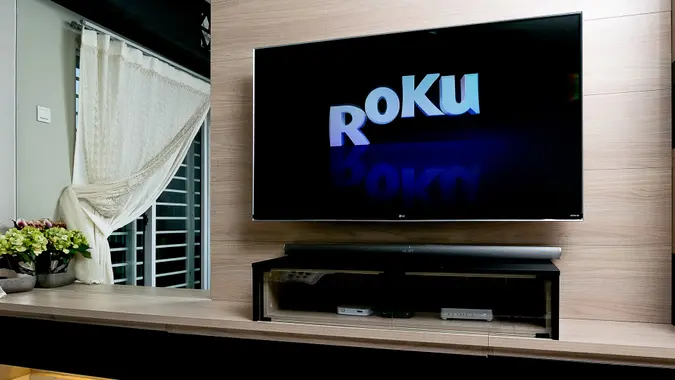5 Emotional Spending Triggers and How to Overcome Them

Commitment to Our Readers
GOBankingRates' editorial team is committed to bringing you unbiased reviews and information. We use data-driven methodologies to evaluate financial products and services - our reviews and ratings are not influenced by advertisers. You can read more about our editorial guidelines and our products and services review methodology.

20 Years
Helping You Live Richer

Reviewed
by Experts

Trusted by
Millions of Readers
Money isn’t just about numbers. It’s deeply tied to emotions, often leading to impulsive decisions that can wreck a budget. And with 73% of American employees struggling to afford much beyond the necessities, according to Resume Now’s 2025 Wage Reality Report, sticking to budgets is more important than ever.
Emotional spending happens when feelings — not needs — drive purchases, pushing people to swipe their cards without a second thought. Recognizing the emotional triggers to this type of spending is the first step to gaining control.
Retail Therapy and Stress Relief
It may be a running joke, but many people use shopping for a temporary escape from stress or sadness, with temporary being the operative word. A rush of dopamine makes buying feel good, but the effect is short-lived. When stress hits, the solution isn’t adding another item to the cart. Instead, identifying healthier coping mechanisms like exercise or meditation can curb the impulse to spend for relief.
Celebratory Shopping
Success, promotions, birthdays — big and small wins often come with a “treat yourself” mentality. That in itself isn’t an issue until rewards turn into a habit. Marking achievements with a low- or no-cost treat instead, even a contribution to a savings goal, is more likely to deliver fulfillment without the side order of financial regret.
Boredom and Mindless Scrolling
Endless online shopping, flash sales and algorithm-driven ads make it easy to buy out of boredom. A scroll turns into a purchase before the brain has time to process whether the item is needed. Replacing the habit with a different go-to boredom buster can keep spending in check. Tech-based solutions, such as removing saved payment methods or using website blockers, add an extra layer of resistance.
FOMO and Social Influence
Social media can be a major trigger in wanting to “keep up” with influencers and friends flaunting new purchases, making spending feel justifiable. Recognizing the difference between a genuine need and a marketing-driven want is key. Unsubscribing from promotional emails, unfollowing certain accounts and remembering personal financial priorities can weaken the pull of FOMO.
Guilt and Obligation Purchases
Spending out of guilt — whether on gifts, donations or saying yes to expensive outings — can drain a budget quickly. The pressure to please others often overrides financial boundaries. Practicing polite but firm ways to decline can make a difference, and keeping (and sticking to) a clear personal budget for these expenses reduces impulse-driven guilt spending.
How to Regain Control
Creating spending boundaries means setting limits before emotions take over. A “cooling-off period” for non-essential purchases — waiting 24 to 48 hours before buying, or even longer for more significant purchases — can reduce impulse spending. Keeping a separate fund for emotional spending triggers provides a financial buffer without derailing larger goals.
Just as important as these practical strategies is addressing the root of emotional spending. This won’t be an overnight process, but learning to recognize and regulate the emotions that trigger unnecessary spending can make a big difference.
Psychology Today recommends stopping to ask whether a decision is based on logic or emotion and whether an emotion might be a roadblock to good financial choices. This kind of awareness helps cut impulsive spending and make smarter choices.
 Written by
Written by  Edited by
Edited by 

























